#Peltigera
Text

Peltigera sp. (pretty sure it is P. praetextata but I didn't do a proper determination).
Jura, France. February 17, 2024
2 notes
·
View notes
Text
Autumn colors 🎨




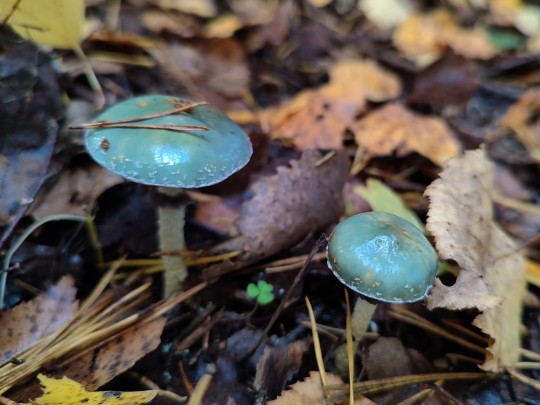
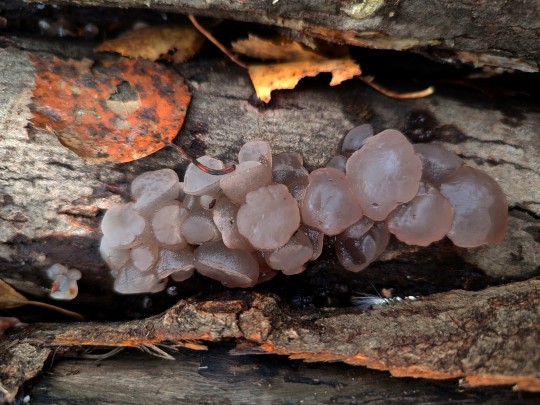
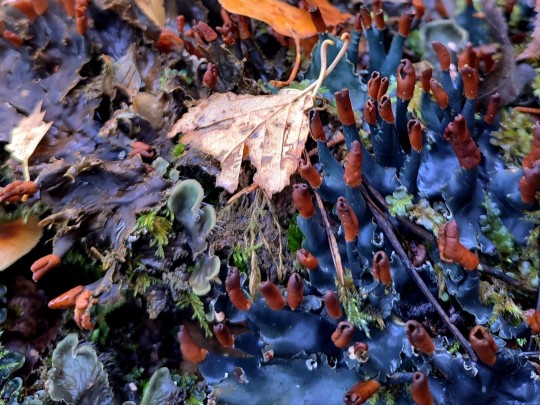

#fungiphotography#fungi#forestcore#mushrooms#forest#autumn#my photos#naturephoto#nature#lichen#macrophotography#Chaenotheca#Calycina#Phlebia#Stropharia#Neobulgaria#Schizophyllum#Kuehneromyces#Peltigera
41 notes
·
View notes
Text


#peltigera membranacea#peltigera#lichen#lower gray wolf river#clallum county#washington#olympus om 5
2 notes
·
View notes
Text
welcome to the Peltigera Zone™... it's where I realize 99% of the green Peltigeras I photographed are all aphthosa
#her uncrisped lobes and black lower surface abruptly changing to white at the margins has captivated me#Peltigera#Peltigera aphthosa#just lichenology things
5 notes
·
View notes
Note
Do you prefer lichen composed of algae or cyanobacteria?
An extremely good question.
I enjoy both, however my favourite genus of lichen is the Cladonia genus, in which I am including both the Cladonia and Cladina morphotypes, which are lichens that primarily associate with algae. I love their little cups and horns, and some are quite beautiful. Related lichen such as Pulchrocladia sp. are also very very pretty and make me think of lacy dresses. I would love to see an outfit based off of P retipora.
Here are some photos I have of Cladonia sp.


Cladonia sp. Cladonia morphotype. Note the singularly attached, un-branched cups and horns, growing from small wart like deposits on the ground.

Cladonia sp. Cladina morphotype. Highly branched with much thinner cups and horns. More moss-like.

Pulchrocladia rangifera, not in the Cladonia genus, in the same family. Possibly one of the prettiest lichens I have seen.
I do love cyanobacteria associated lichens such as the dog lichens found in the genus Peltigera, purely because they have such striking dark blue colourations, almost to the point of being black. See below a dog lichen I found as part of a trip collecting herbarium samples.

Fun fact, in the process of digging this lichen out of the rotting log it was on, the safety catch failed on the knife I was using and closed so heavily on my finger that it severe the nerves on the end of my index finger!
#thank you for the question anon! I love answering questions!#lichen#lichen photography#coral lichen#cladonia#cladina#peltigera#dog lichen#pixie cups#lichenology#inbox things
1 note
·
View note
Text
FOUR WEEKS in FEBRUARY

View On WordPress
0 notes
Text

Some kind of Peltigera lichen.
#Bruce Trail#Cape Chin#Niagara Escarpment#Bruce Peninsula#Bruce County#Ontario#Canada#hiking#hiking trail#forest#wilderness#outdoors#lichen#Peltigera#photography#digital photography#DSLR#Canon 6D#photographers on Tumblr
0 notes
Text
I went on 2 lichen collecting trips this past week! I am exhausted but it was tons of fun and I got to meet so many great bois! Look!

Lobaria pulmonaria

Ricasolia amplissima

Pertusaria amara and Lecanora sp.
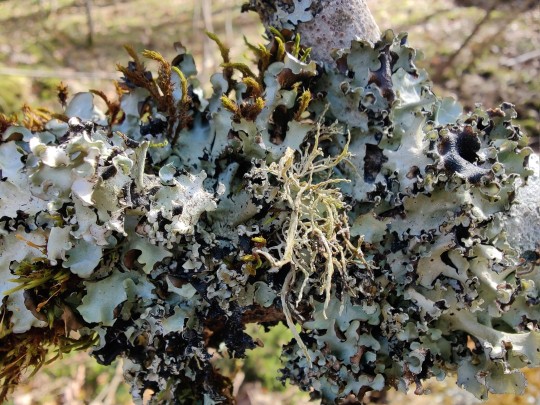
Cetrelia sp., Ramalina farinacea

Cladonia digitata

Cladonia fimbriata

Peltigera leucophlebia
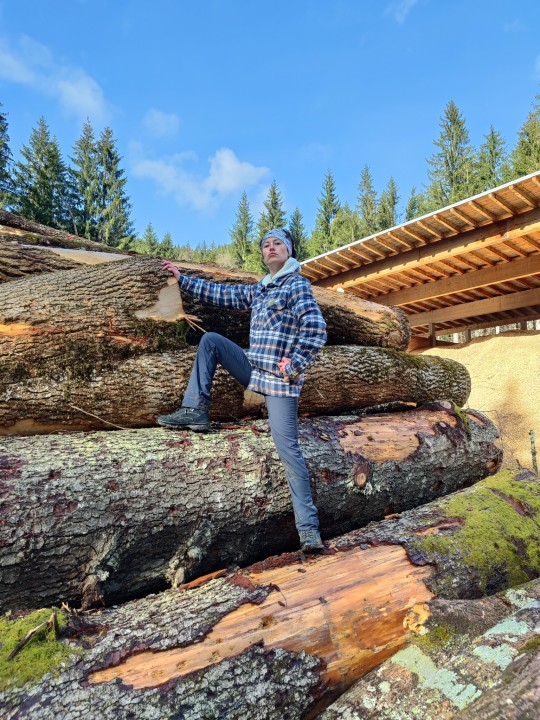
Me and a bunch of logs covered in lichen
278 notes
·
View notes
Text
Peltigera has discovered his Beast form!


Find him here for 500g!
25 notes
·
View notes
Text

Peltigera malacea (veinless pelt lichen) and Cladonia sp. (maybe C. rangiferina - grey reindeer lichen).
Duck Lake, SK, Canada. October 2, 2023
3 notes
·
View notes
Text
Zygopetalum Murasaki Kovach x Jumpin Jack hybrid, a Peltigera hymenia from my yard, and a lovely goth Helebore outside the hospital where I get my physical therapy.


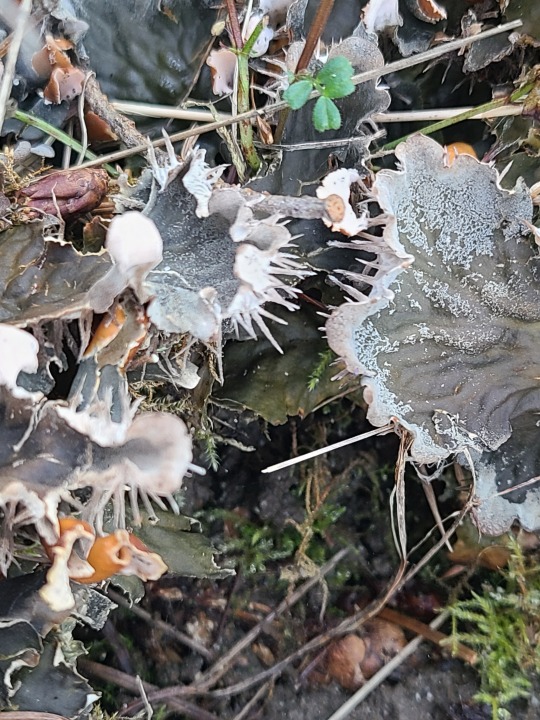

3 notes
·
View notes
Text


1 note
·
View note
Text
Lichen. Do you say like-en? Or do you rhyme it with kitchen and say litch-en?

However you say it, lichen are cool little organisms. Part fungus. Part algae or cyanobacteria. Different organisms living and working together.

In walking or snowshoeing through the forests of the national park, you’ll find lichen draped over and perched on many trees. Throughout the winter, it’s easiest to see the lichens in and on the trees though they can also be found on rocks, buildings, walls, etc.

The colors and shapes of the lichens vary but they can all take advantage of something we have in abundance in the winter. Precipitation. Here in the Pacific Northwest, we have dry summers with little rain. During the dry periods, like summer time, lichens dry up, become brittle, and go dormant.
Starting in November, the park generally starts into the rainy season. With the return of precipitation, the lichens plump back up and take in the sun. Lichens are not parasites and do not harm the trees they grow on. Given both water and sunshine, some lichens can photosynthesize even in cooler temperatures. Winter storms with their winds, bring down branches and lichens making it easy for us to examine these amazing little organisms.
Have you noticed the beautiful lichens festooning the trees and rocks in the national park? Have you stopped to study the lettuce-shaped felt lichen or the ones that look like long and stringy hair? When was the last time you noticed the strong green of a lichen in the snowy forests? ~ams
More information on lichens in the national park can be found here https://www.nps.gov/mora/learn/nature/lichens.htm . Remember that natural and cultural resources within a national park are protected. Please leave things where you find them.
These photographs are from past days and do not reflect current conditions. NPS Photo. Trees in the Longmire Stewardship Campground festooned with lichens, mosses and possibly fungus. January, 2023. NPS Photo. A lobaria lichen found on the snow in the campground with other canopy debris. January, 2023. NPS Photo. Bright, green peltigera lichen living on tree trunk along with other lichens and mosses. January, 2023.
23 notes
·
View notes
Photo

Unknown lichen, likely in the genus Peltigera?
3 notes
·
View notes
Text
0 notes


